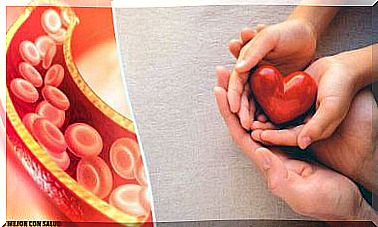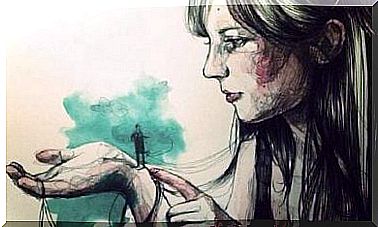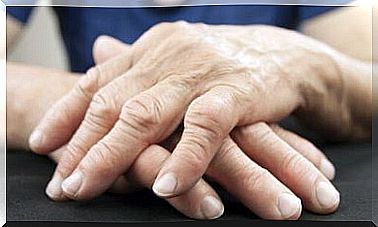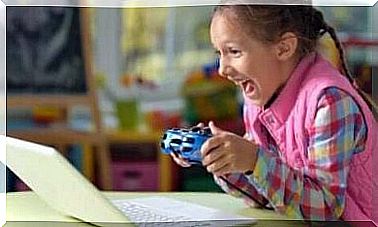Childhood Alopecia: Causes And Types
Childhood Alopecia is a condition that leads to excessive hair loss. In order to properly treat this problem, it is necessary to determine both the type of alopecia and the possible cause. Everything you need to know about this topic.
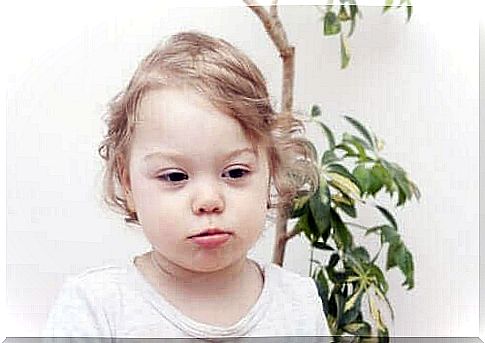
Childhood alopecia is excessive hair loss that can occur in children under the age of 12. In the beginning, the problem is usually not noticed or recognized at all. This is because many parents consider hair loss to be a normal symptom of the growth phase.
However, in some cases it can be quite visible. Especially when the volume of the child’s hair decreases and bald spots appear. But what are the causes of childhood alopecia ? What types are there? In today’s article we will inform you about the most important aspects of this condition.
What are the causes of childhood alopecia?
According to information released by the American Hair Loss Association , 3% of pediatrician visits are related to childhood alopecia. This problem is of great concern to many parents. This is not only due to the connection with various health problems, but also to the emotional impact on the affected child.
Fortunately, childhood alopecia is temporary and can often be resolved with professional intervention. However, it is very important to first make a correct diagnosis in order to determine the correct treatment. In other words, a specialist needs to determine the cause and also the type of hair loss.
In many cases, childhood alopecia is the result of infectious processes of the scalp or genetic factors. In addition, there are other possible triggers that can cause hair loss in children. These include the following:
- Diseases – hypothyroidism, lupus erythematosus, cancer and others
- Metabolic changes
- Nutritional deficiencies (such as a zinc or iron deficiency)
- Tractions
- Emotional triggers (parenting divorce, bullying, anxiety disorders, etc.)
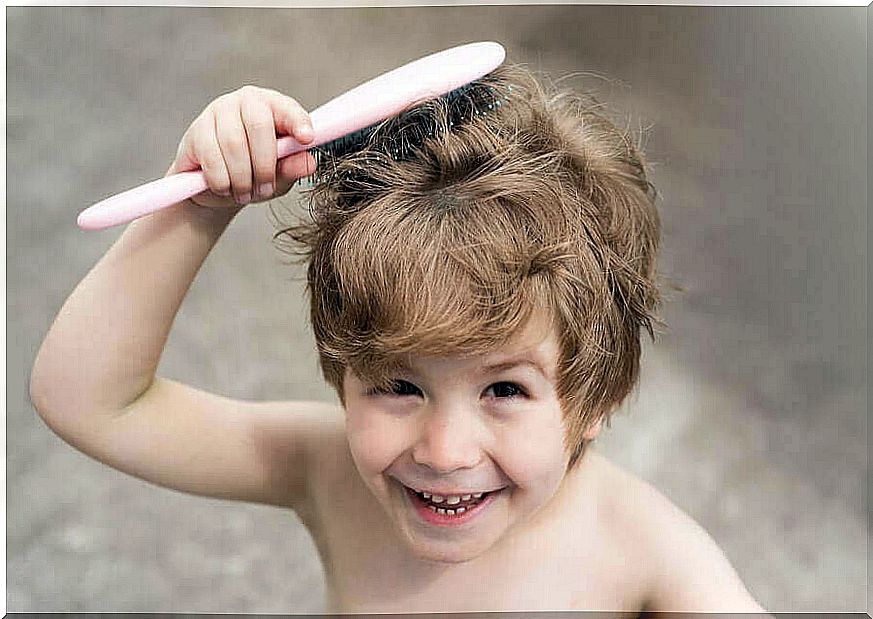
Childhood alopecia: types
Childhood alopecia is divided into two categories: cicatricial alopecia and non-cicatricial alopecia. In the first category, there is damage to the hair follicles, which causes a permanent and irreversible effect. In contrast, the effects of non-scarring alopecia are reversible. What are the different types of childhood alopecia?
Occipital alopecia (on the back of the scalp)
As described in an article published in the Annals of Dermatology , occipital alopecia occurs during the first few months of life due to the development of the follicular cycle, which occurs in the fetal and neonatal phases.
During the 20th week of pregnancy, the scalp already has follicles that are in the growth phase. Over the months, these follicles reach the failure phase. Therefore, abrupt hair loss can be observed at birth. In this case, no treatment is required as the hair will grow back on its own.
Congenital triangular alopecia
Triangular alopecia starts in the uterus. It is characterized by a triangular-shaped patch with no hair on it. This spot usually appears on both sides of the temporal region and does not expand to other areas. This form of childhood alopecia is permanent. In other words, there is no treatment for it.
Telogenes and anages effluvium
When children experience this type of hair loss, they lose a great deal of hair. In general, hair loss is associated with the following conditions:
- Endocrine Disorders
- Chronic illnesses
- Deficiency symptoms
- chemotherapy
- Pharmaceuticals
- Surgical interventions
- High fever
- Vaccinations
Treatment involves diagnosing the underlying cause and resolving that problem. Telogenic and anagen effluvium are the most common variations of diffuse hair loss in children.
Alopecia areata (circular hair loss)
This is a chronic inflammatory process that originates from the immune system. The hair falls out by itself due to an abrupt stop of the follicles in certain areas. Areas affected can be the head or the body (arms or legs).
In general, alopecia areata occurs and can be treated before the age of 20. The main reasons for this are emotional tension or intense moments of stress. For example exam times, emotional or physical abuse, parent divorce, etc.
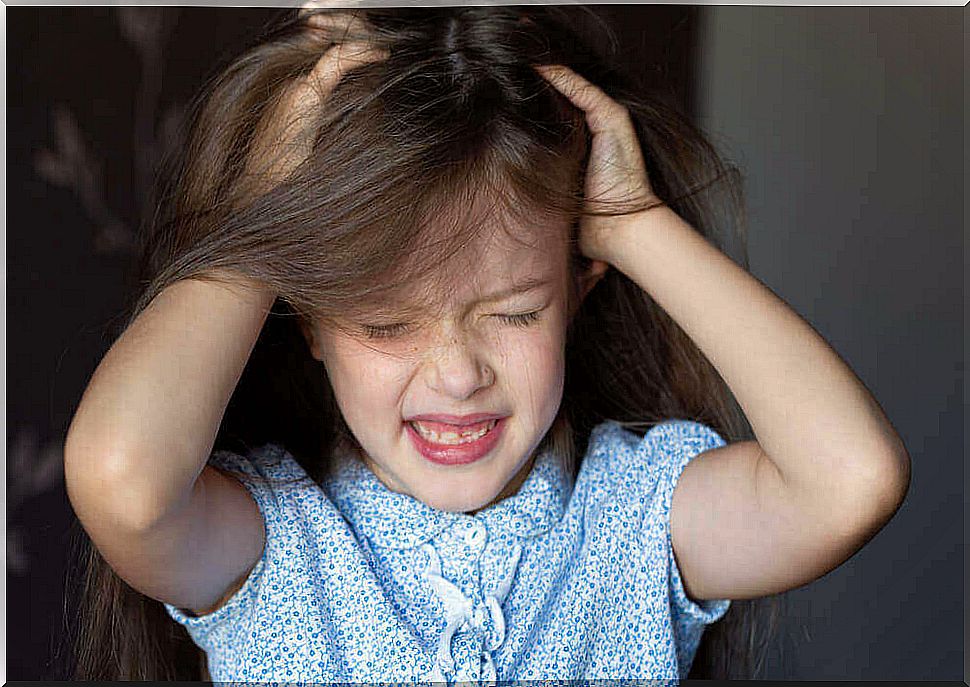
Childhood alopecia due to traction
However, ponytails, braids, and tight hairstyles can also lead to hair loss in children. In this case, the permanent pull on certain areas of the hair is responsible. Also, in some cases, this hair loss can be irreversible. Therefore, it is important that you avoid putting too much tension on your hair. Instead, you should let it drop openly and loosely.
Childhood alopecia due to trichotillomania
Severe anxiety disorders can cause children to pull their hair out, leading to alopecia. Treatment consists of psychological support aimed at identifying the causes of the problem. In addition, this behavior is considered a nervous tic and is more common on the neck and bangs.
Alopecia from ringworm
In this case, alopecia is caused by the presence of fungus and leads to localized hair loss. In addition, ringworm can spread through contact with other children. This can happen, for example, in a daycare or school, when the children use the same hairbrush or towel.
You should refrain from using home remedies. Instead, you should see a dermatologist who will prescribe the appropriate treatment.
Alopecia as a result of oncological treatments
This form of alopecia occurs not only on the head, but also on the face and body. In this case, too, you should avoid home remedies. When the oncological treatment is finished, the hair will grow back.
Childhood Alopecia: What Else You Should Know
Basically , each type of alopecia occurs more often in a certain age group.
- Occipital and triangular alopecia are more common in babies and young children.
- Telogenic and anagen effluvium, trichotillomania, tumors, ringworm, and alopecia areata are more common in later childhood and adolescence.
However , in any case, it is always best to see a pediatrician or dermatologist for a correct diagnosis. Once a professional has identified the cause of the alopecia, he or she will decide which therapeutic options are the most effective.

